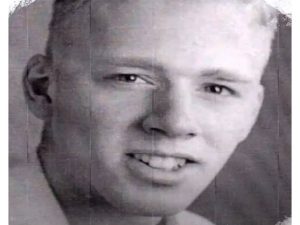Bowser, Roland Lee
Army Private

Roland Lee Bowser from New Kensington, Pennsylvania, Westmoreland county.
Parents: Warren S. Bowser
Service era: Korea
Date of death: Thursday, November 2, 1950
Death details: During the last week of October 1950, Republic of Korea (ROK) Army forces under the control of the U.S. Eighth Army were advancing deep in North Korean territory, approaching the Yalu River on the Chinese-Korean border. Chinese Communist Forces (CCF) struck back in a surprise attack, engaging the ROK 1st and 6th Divisions near Unsan, some sixty miles north of Pyongyang. The U.S. 1st Cavalry Division, with the 8th Cavalry Regiment in the lead, was rushed forward to reinforce the ROK units in the Unsan area. On November 1, the regiment’s 1st Battalion took up positions north of Unsan, while the 2nd Battalion moved to guard the Nammyon River valley west of town, and the 3rd Battalion was placed in reserve at the valley’s southern end. Private First Class Roland Lee Bowser, who joined the U.S. Army from Pennsylvania, was a member of Company M, 3rd Battalion, 8th Cavalry Regiment, 1st Cavalry Division. On November 2, 1950, his company was providing security for the 3rd Battalion Command Post near Unsan, when it was hit by a surprise enemy attack and overrun, and he was taken prisoner of war. After his capture, he was marched north to a prison camp at Pyoktong where he died of dysentery and untreated wounds on an unknown date, and was buried nearby. Attempts to locate his remains since the close of war were unsuccessful, and he remains unaccounted-for. Today, Private First Class Bowser is memorialized on the Courts of the Missing at the National Memorial Cemetery of the Pacific.
Source: National Archives, Defense POW/MIA Accounting Agency, Pittsburgh Sun Telegraph (1953)